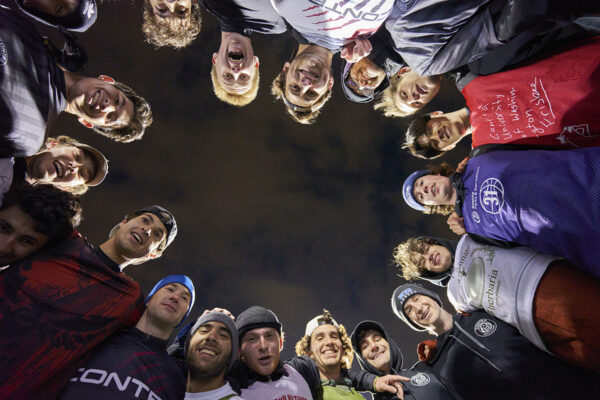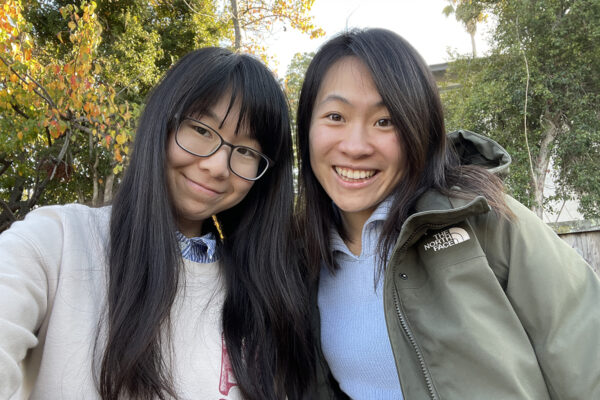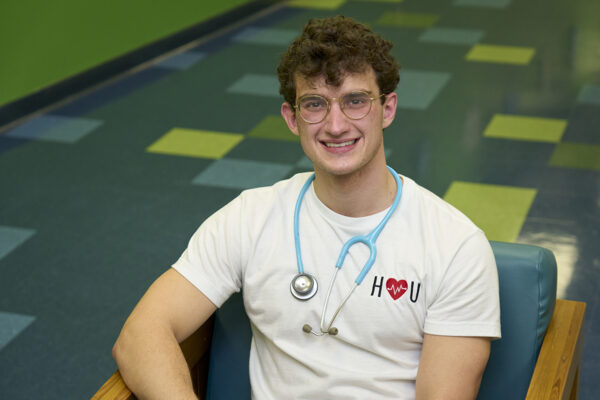When the professors go away, students come out to play. Every night, members of Washington University in St. Louis’ 400-plus student groups and nearly 500 intramural and club sport teams fill campus classrooms, studios, common spaces and fields to perform, practice, publish, build and compete. Here, the Record captures a small sampling of one week’s nocturnal action.
(Videos: Sanchali Pothuru/Washington University)
MONDAY: Circle dancing on the South 40
Dancer Michael Ge arrives at Mudd Multipurpose Room in Mudd House on the South 40, ready to teach hip hop, house or thread and trace. Which one is up to the dancers of WU Cypher.
He demonstrates each style and asks dancers to vote for their pick by jumping. The verdict: thread and trace, two popular breakdancing styles.
A no-audition, no-choreography freestyle dance group, WU Cypher hosts open practices and workshops for undergraduates, graduate students and members of the St. Louis community. Ge, an alumnus who led the group from 2020-22, is back to pass down his knowledge and experience.
“Dance, or really any creative art, needs instructors to carry on,” Ge says. “If you want things to continue, you have to come back.”
At the end of practice, dancers gather in a “cypher” — or circle — and take turns showing off their new moves. Stepping into the center, junior Ray Xia impresses with her floorwork.
“I can get two hours of sleep for a paper and still come in and be refreshed,” Xia says.
Senior Sulan Pathiranage says the cypher is both the club’s namesake and a symbol of its tightknit community.
“It’s your time to shine,” Pathiranage says. “It’s all uplifting, celebrating your own expression and creativity and having everybody around you joining in support of that.”
– Amanda Young
TUESDAY: Keeping score at Sumers Rec
After a disappointing season, Pushin’ P is back with fresh uniforms, a talented goalkeeper and a drive to be futsal champions.
“No crashing this time,” says sophomore Youssef Saad, warming up at the Sumers Rec Center.
Futsal — 5-on-5 indoor soccer — is WashU’s most popular intramural sport, with 52 teams and 550 players. Each half lasts 20 intense minutes. Slide tackles and headers draw a yellow card; bicycle kicks are discouraged.
“No fancy stuff,” warns the ref after Pushin’ P wins the coin flip.
Pushin’ P is composed largely of Muslim Student Association members. Many are biology majors; all are soccer fanatics. Their manager is senior and former Bear Shiv Lamba, who arrives dressed sharply in black.
“I do it for the intimidation factor,” Lamba says.
Blazers are intimidating?
“And turtlenecks,” Lamba deadpans.
The opposition looks more amused than intimidated and keeps the game close despite having five players to Pushin’ P’s nine. But Pushin’ P breaks through in the second half. Goal. Goal. Goal. Goal. Goal. Goal. And with four seconds on the clock: goal.
The buzzer blares and captain Nurudeen Alli hugs teammate, and baby brother, junior Abdul Alli. Since graduating in December, Nurudeen Alli has been studying nonstop for the Medical College Admission Test.
“So the break is nice,” Alli says. “But the real reason I’m here is love of my friends and, of course, love of the game.”
– Diane Toroian Keaggy
WEDNESDAY: Trial run in Seigle Hall
“Would you recognize the flight log if I showed it to you today?” asks attorney Andrew de las Alas.
“Of course I would,” answers flight instructor Danielle Bryden.
Only de las Alas isn’t a lawyer and Bryden can’t fly. Rather, they are sophomores and members of WashU’s Mock Trial team, preparing in Seigle Hall for American Mock Trial Association (AMTA) competition season.
Every year, university mock trial teams ready arguments for both sides of the same case — in this instance, a civil negligence suit brought against a flight company after one of their students causes a deadly crash. Though AMTA writes the case, teams have the creative freedom to develop their own courtroom characters and legal strategies. That’s why Bryden speaks in a heavy Czech accent and de las Alas interrogates her about what she did — and did not — cover in her lessons.
“That way we can show the defendant’s lack of preparation to fly in certain kinds of weather,” de las Alas explains.
The team practices up to four nights a week in Seigle Hall. The hard work is paying off. Members say they’ve improved their legal literacy and public speaking skills. And last year, WashU Mock Trial placed 10th at the national championship.
“Mock Trial is a very competitive activity,” de las Alas says. “But the way that we motivate ourselves is to really like the people we are doing it with. We’re constantly giving feedback on objections, characters, theory, even the minutiae of what word or inflection to use. It’s very much a team sport.”
– Amanda Young
FRIDAY: Grinding it out at Urbauer Machine Shop
Junior Maeve Lomax of WURocketry plugs a flash drive into the three-axis mill in Urbauer Machine Shop and secures a rocket bulkhead — a one-pound aluminum disc — into the machine’s vise.
“It’s time,” she calls to her team members. “Things are about to get interesting.”
Lomax has just finished writing a program that will instruct the mill where and how much aluminum to trim from the rocket’s three bulkheads.
“Too much and it will fail from the parachute deployment force. Too little and the rocket will still be too heavy,” says Lomax, a mechanical engineering student.
WURocketry started work this summer on its 45-pound, 9-foot rocket for the NASA Student Launch competition in Huntsville, Ala. This year’s challenge: build a rocket that can carry a digital camera system in its payload and reach an altitude of 4,000-6,000 feet.
WURocketry’s model only hit 3,800 feet during a flight test, which is why Lomax’s team is back in the shop searching for ways to get the rocket down to 42 pounds.
“For us, this is actually a fun way to spend a Friday night,” Lomax says. “We really like working together in the shop and learning from each other’s expertise.”
Lomax presses the buttons on the mill’s digital readout and the machine whirs into action, carving gentle grooves onto the disc’s surface. After 30 minutes, the bulkhead is almost 50% lighter.
“You can definitely feel the difference,” says a relieved Lomax, brushing aluminum shavings off the mill. “Now let’s do it again.”
– Diane Toroian Keaggy
SATURDAY: Moo-ving performances in Tisch Commons
A cow-printed banner reading “Cowbaret” hangs over the stage in Tisch Commons in the Danforth University Center, and miniature cowboy hats decorate the tables.
It’s time for All Student Theatre’s annual cabaret show, which is Western-themed this year. For the next hour, students will sing, read poetry and perform improv.
“There are very few opportunities where students get a chance to perform simply for the joy and intent of bringing something that we find meaningful to the stage, and this is a chance to seize that opportunity,” says junior Zoe Chase, host of the event. “AST’s cabaret is a platform for students of all backgrounds to showcase their unique talents in a space free of judgment.”
Junior Eliza Rocks, dressed in cowboy boots and pink gingham, waits to take the stage.
“I’m a little nervous because it is in Tisch Commons, which is a public place, but I’m excited too,” she admits.
It’s time. Chase announces Rocks, who takes center stage lit by blue and pink lights. Her voice does not waver as she delivers her poem.
I’m an actor
Let me play the man
Let me show you that I can do it
Let me show you that I can be just like you
The poem ends and Rocks says a quick “thank you” before the silence breaks into cheering and applause.
– Sierra Milligan


